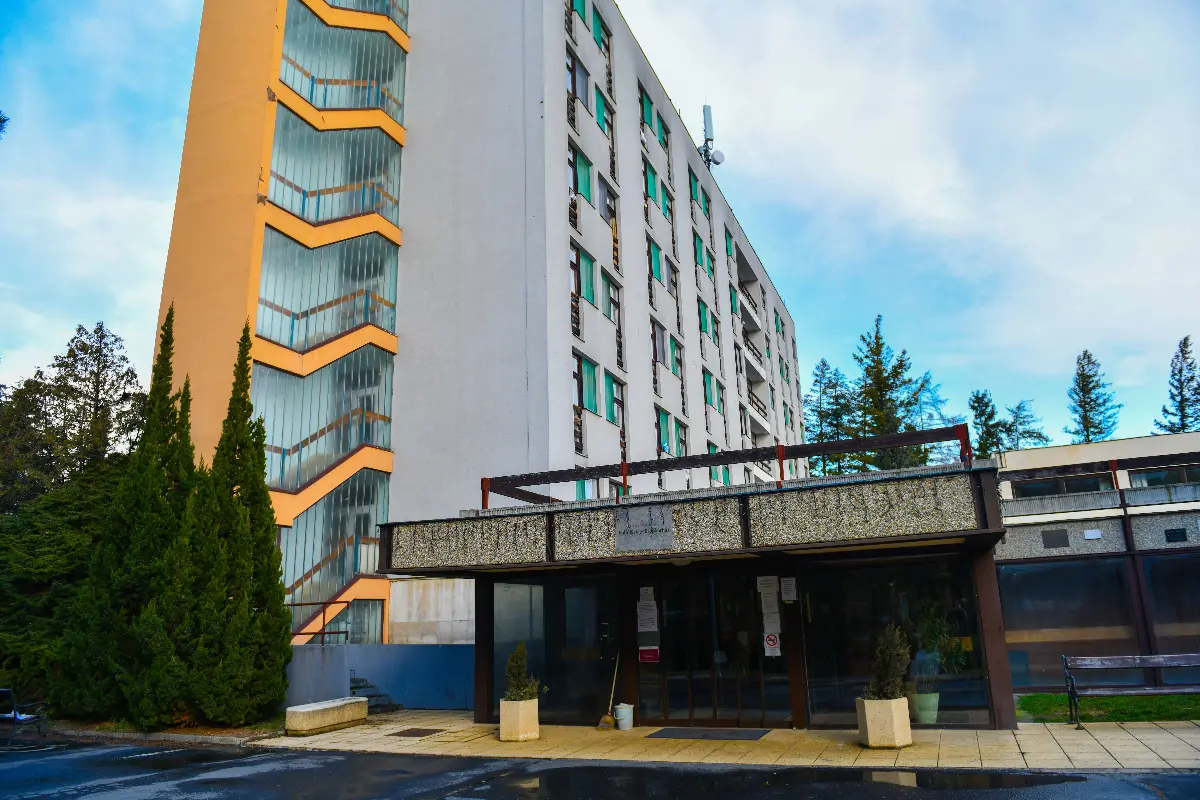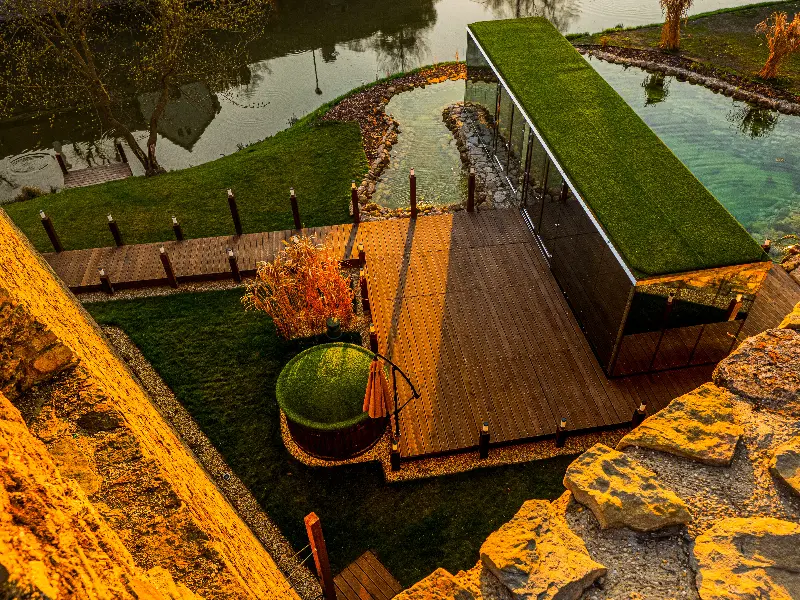
Helyszín címkék:
Balf – Wolfs, formerly Sankt Wolfgang – is located seven kilometres from Sopron, in a beautiful natural setting. A document of 1199 mentions the settlement as “Farkasd”, but in 1278 it was mentioned as “Wolf”. The history of Balf is intertwined with the history of the town of Sopron almost from the very beginning, as the citizens of Sopron started to use the thermal waters for bathing from the Middle Ages. In 1342 part of the village was bought by the town. From 1560 new bath buildings were constructed and many noble and aristocratic families visited the baths. It has become a significant settlement in the World Heritage-listed Lake Fertő (Neusiedl) Area, and a typical wine-growing location of the Sopron wine region, where many monuments can be found, which we now present one by one:
Thermal water
Even the Romans knew the thermal springs of the area, and during the reign of Marcus Aurelius it had a well-developed spa life. The medicinal water of Balf was also popular with the citizens of Sopron, and in 1342 the town even bought Balf. The first bathhouse was built in 1560, and 30 years later there were 8 bathhouses operating here. Balf gained a reputation for miraculous thermal water, and became a first-class bathing resort in the early 20th century. The water of the sulphurous springs is officially medicinal water, and a spa hospital was built here. The statue of Pieta, dating from 1706, is located in the English Park, next to the medical institute. The carved stone memorial depicts the instruments of Christ's torture. There is also a Baroque bath chapel in the spa park, built in 1773 in honour of St Joseph. The frescos of the chapel are outstanding works of Hungarian Baroque art.
Count Albert Apponyi

The statue of Count Albert Apponyi stands in front of the Mayor's Office. He led the Hungarian delegation to the Paris Peace Conference of 1920, which ended the First World War, and was accompanied by Count István Bethlen and Count Pál Teleki. Count Albert Apponyi wanted to preserve the territorial integrity of Hungary, but his request for referendums was rejected by the winning countries. However, the Hungarian committee did not accept the peace terms, and when the territories were handed over in 1921, the Austrian gendarmes were met by gunfire in the areas of Ágfalva and Pinkafő, which spread to the whole of the areas to be handed over. In exchange for the removal of the rebels, a referendum was called in Sopron and eight surrounding villages. And we are well aware of the result of the 1921 referendum: Sopron, Ágfalva, Sopron-Bánfalva, Fertőrákos, Harka, Fertőboz, Balf, Nagycenk and Kópháza did not secede from Hungary.
Antal Szerb Memorial

The Antal Szerb Memorial is located next to the stone fence of the St Farkas Castle Church. Balf was invaded by German troops in 1944, and one of the largest labour camps in the Sopron district was established, holding 2,000 prisoners in inhuman conditions. The literary historian and writer Antal Szerb, the poet György Sárközi and the aesthete Gábor Halász died here. A sculpture was erected here in memory of the murdered Jewish labourers, based on the designs of sculptor László Kutas and architect Barna Winkler. The marble slabs in the shape of a man sinking into the side of the cemetery hill symbolise the “forced march”.
Saint Farkas Castle Church

On the vineyard above Balf stands this medieval church, which was probably also used as a watchtower. It was built in the 15th century and its furnishings date from the second half of the 19th century. Next to the church there is a cemetery. A part of its fence was built in the 1600s as a fortress with fortifications to protect the church from the Turkish war, and part of which can still be seen today.
Balf Drinking Fountain

The drinking fountain in Balf is a useful location to visit if you are cycling through the countryside. The water of the drinking fountain, which was made in the “Zsolnay Porcelánmanufaktúra” (Zsolnay Porcelain Manufacture), is rich in lithium, calcium and magnesium, and helps stomach function, bone formation, cell regeneration and the maintenance of nervous system stability. The characteristic smell of its water can be smelled from afar as you approach the fountain.










